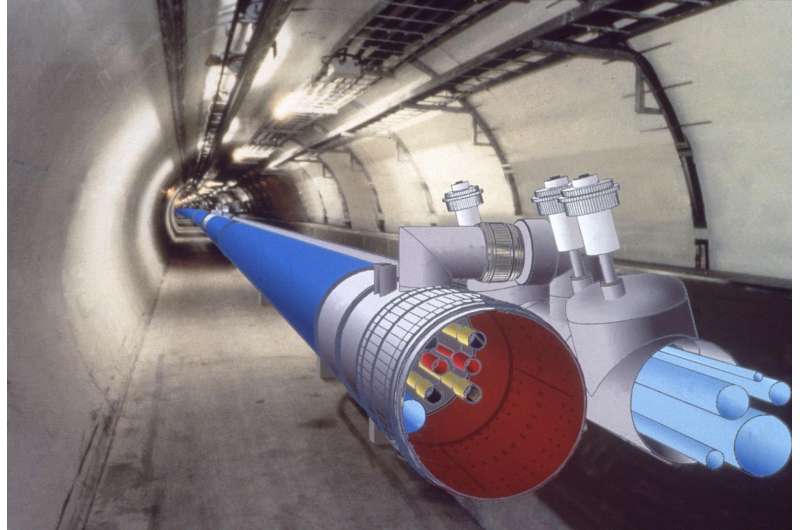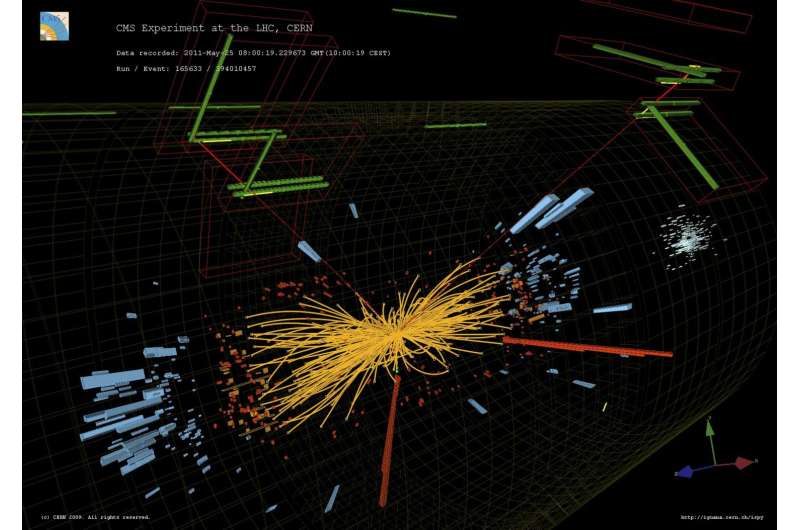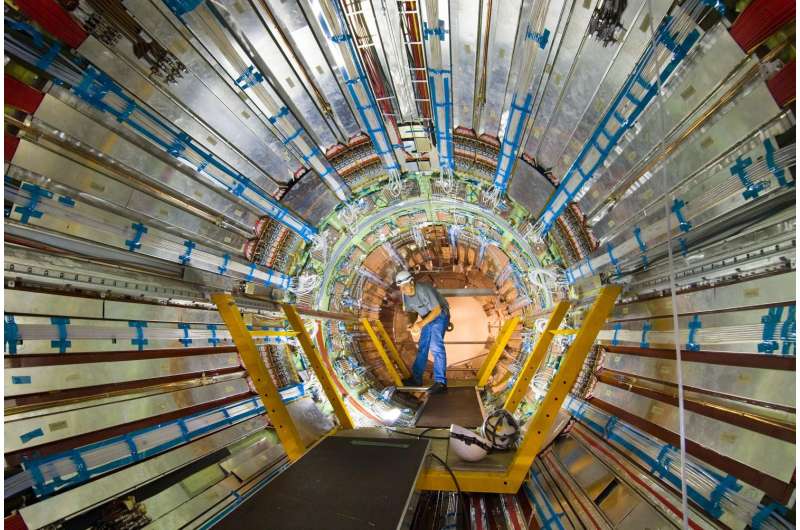Scientists predict the existence of a new boson: New Madala boson might assist in the understanding of dark matter

Scientists at the High Energy Physics Group (HEP) of the University of the Witwatersrand in Johannesburg predict the existence of a new boson that might aid in the understanding of Dark Matter in the Universe.
Using data from a series of experiments that led to the discovery and first exploration of the Higgs boson at the European Organization for Nuclear Research (CERN) in 2012, the group established what they call the Madala hypothesis, in describing a new boson, named as the Madala boson. The experiment was repeated in 2015 and 2016, after a two-and-a-half year shut-down of the Large Hadron Collider (LHC) at CERN. The data reported by the LHC experiments in 2016 have corroborated the features in the data that triggered the Madala hypothesis in the first place.
"Based on a number of features and peculiarities of the data reported by the experiments at the LHC and collected up to the end of 2012, the Wits HEP group in collaboration with scientists in India and Sweden formulated the Madala hypothesis," says Professor Bruce Mellado, team leader of the HEP group at Wits.
The Wits Madala project team consists of approximately 35 young South African and African students and researchers who are currently contributing to the understanding of the data coming out of the LHC experiments, along with phenomenological investigations from theorists such as Prof. Alan Cornell and Dr. Mukesh Kumar and support in the area of detector instrumentation from Prof. Elias Sideras-Haddad (all from Wits University).

The hypothesis describes the existence of a new boson and field, similar to the Higgs boson. However, where the Higgs boson in the Standard Model of Physics only interacts with known matter, the Madala boson interacts with Dark Matter, which makes about 27% of the Universe.
"Physics today is at a crossroads similar to the times of Einstein and the fathers of Quantum Mechanics," says Mellado. "Classical physics failed to explain a number of phenomena and, as a result, it needed to be revolutionised with new concepts, such as relativity and quantum physics, leading to the creation of what we know now as modern physics."
The theory that underpins the understanding of fundamental interactions in nature in modern physics is referred to as the Standard Model of Physics. With the discovery of the Higgs boson at the LHC in 2012, for which the Nobel Prize in Physics was awarded in 2013, the Standard Model of Physics is now complete. However, this model is insufficient to describe a number of phenomena such as Dark Matter.

The universe is made of mass and energy. The mass that we can touch, smell and see, the mass that can be explained by the Higgs boson, makes up only 4% of the mas-energy budget of the Universe. The rest of the mass in the Universe is simply unknown, yet it makes about 27% of the world around us. The next big step for the physics of fundamental interactions now is to understand the nature of Dark Matter in the Universe: what is it made of? How many different types of particles are there? How do they interact among each other? How does it interact with the known matter? What can it tell us about the evolution of the Universe?
The discovery of the Higgs boson at the LHC at CERN has opened the door into making even more ground-breaking discoveries, such as the observation of new bosons that are linked to forces and particles unknown before. These new particles can explain where the unknown matter in the Universe comes from.
"With the Madala hypothesis predictions of striking signatures are made, that is being pursued by the young scientists of the Wits HEP group." Some of these scientists include Dr. Deepak Kar and Dr. Xifeng Ruan, two new academic staff in the group, who have years of expertise at the LHC.
Provided by Wits University



















